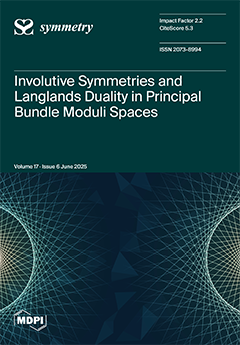In carbazole-substituted phthalocyanine complexes 2,3,9,10,16,17,23,24-octakis-(3,6-dibromo-9Hcarbazol) phthalocyaninato zinc(II) (Pc 2) and 2,3,9,10,16,17,23,24-Octakis-(9H-carbazol-9-yl) phthalocyaninato zinc(II) (Pc 4) and their conjugated complexes to graphene quantum dots (GQDs), we studied the nonlinear absorption and propagating of picosecond pulse trains. Each pulse train contains 25 subpulses with width
[...] Read more.
In carbazole-substituted phthalocyanine complexes 2,3,9,10,16,17,23,24-octakis-(3,6-dibromo-9Hcarbazol) phthalocyaninato zinc(II) (Pc 2) and 2,3,9,10,16,17,23,24-Octakis-(9H-carbazol-9-yl) phthalocyaninato zinc(II) (Pc 4) and their conjugated complexes to graphene quantum dots (GQDs), we studied the nonlinear absorption and propagating of picosecond pulse trains. Each pulse train contains 25 subpulses with width 100 ps seperated by space 13 ns. During the interaction with pulse trains, the structures of Pcs can be simplified to the five-state energy model. In our calculations, the coupled rate equations and two-dimensional paraxial field were solved using the Crank–Nicholson numerical method. The effects of substituted carbazoles and conjugated GQDs were investigated. Pcs and their conjugated complexes with GQDs exhibit optical limiting (OL) properties, and GQDs could decrease the OL of Pcs. One-photon absorption cross section
or
is the critical factor to determine the limiting value of energy transmittance in weak- or strong-intensity regions, respectively. The two-step two-photon absorption (TPA) tunnel
is the main absorption mechanism; therefore, the effective population transfer time
from
to
is another critical factor that is determined by one-photon absorption cross section
and intersystem crossing time
. Through further exploration it is found that a high incident intensity will lead to an asymmetric shape of output intensity due to different absorption mechanisms in the front and latter subpulses of the pulse train.
Full article





